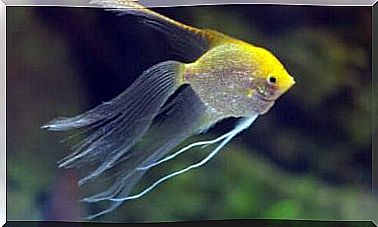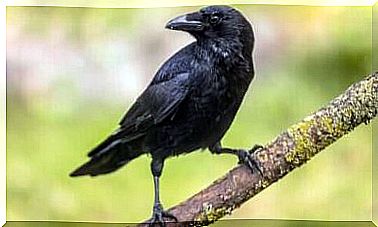The Donkey: Characteristics, Behavior And Habitat
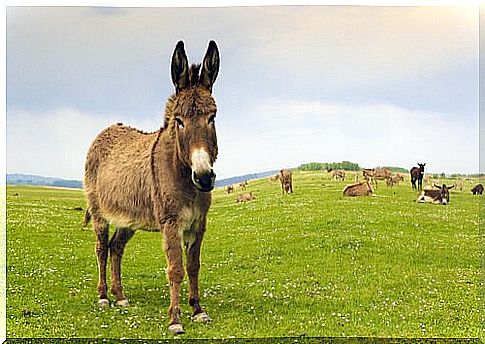
There are donkeys almost everywhere in the world . They are used in particular as draft and pack animals, but the exceptionally delicate and intelligent characteristics of this animal, which is related to the horse, are often forgotten. In today’s article, you will learn all you need to know about donkeys.
Physical characteristics of the donkey
Donkeys belong to the Equidae family, as do horses, various species of zebra and the rhino.
However, they are a little smaller than horses. An adult donkey measures approximately three to four feet to the shoulder, although there are some breeds that are larger. The shoulder height of the Catalan donkey averages over 160 cm. They weigh around 250 kg and live on average between 15 and 20 years. However, there are also individual specimens that have reached the proud age of 40 years.
The color of a donkey is usually gray in various shades, white or black. There are also brown donkey breeds. While there are completely white or black donkeys, most are mixed colors.
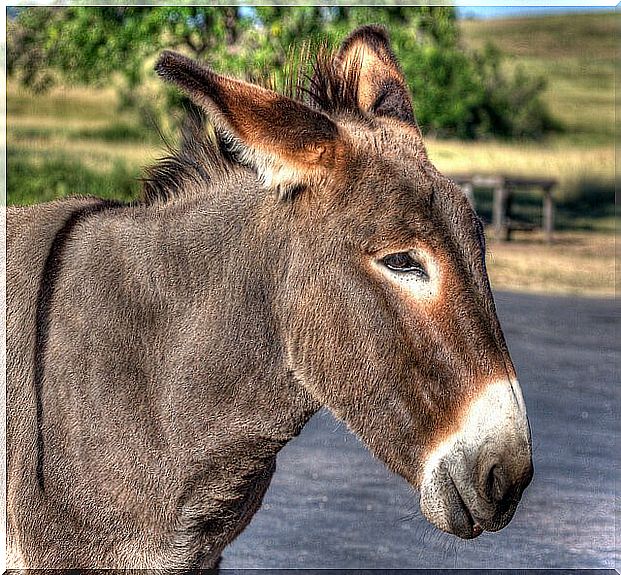
Ethological characteristics
Today’s domestic donkey descends from the wild ass that was originally native to Africa. It was tamed around 6,000 years ago and used as a draft animal. They are very strong and resilient animals that are able to survive in hot areas with little water, even in the desert. However, they are not suitable for cold climates.
The long-ears are herbivores and are not at all picky. However, they prefer fresh grass and hay, they are less fond of woody bushes. They also love vegetables. Compared to other animals of the same size, they are very frugal.
In addition, they can manage very well with water. They take it from the plants they eat and therefore drink very little. They are very picky about dirty water sources because they can draw water from the plants.
Behavior of the donkey
The gray animals are mostly underestimated. They are very docile and compliant. Donkeys are still used as draft animals and pack animals in many regions of the world because they do a good job! Even under very tough conditions and when there is no time to rest, you can rely on donkeys. They endure extreme living conditions and are used to work that would be impossible for others.
Unfortunately donkey is used as a synonym for stupidity, but this is far from reality. The long-eared animals are very intelligent and alert. While their movements are slow and they never seem to be in a rush, when given the opportunity, they show their intelligence and can solve complex problems.
They also have excellent memories, which enable them to remember places and paths they traveled a long time ago.
It is very difficult to upset a donkey, but if it does get that far, it can defend itself appropriately by kicking its hind legs hard. If this is not possible, the angry animal may also bite to defend itself. But these are only exceptional cases, because as already mentioned, these workhorses are very docile and anything but aggressive or irritable.
They have a reputation for being very stubborn, and in fact they are. When donkeys don’t want to do something, it’s very difficult to convince them to do so. However, this is due to the fact that these are very cautious animals that can sense danger and therefore do not obey.
Habitat of the donkey
We also mentioned earlier that donkeys can be found all over the world. Although the first specimens were tamed in Africa, their exceptional character and strength quickly made them very popular everywhere, especially in warmer areas.
They can be found in southern and western Europe, in almost all of Asia and also on the whole of the African continent. The workhorses are also very popular in South America. Half of the donkeys currently living in Asia are native to China, Afghanistan and India. The pack animals are also found in America, most of them in Mexico and Colombia.
In Spain, the intelligent animals are particularly at home in Andalusia, but unfortunately there are fewer and fewer of them.
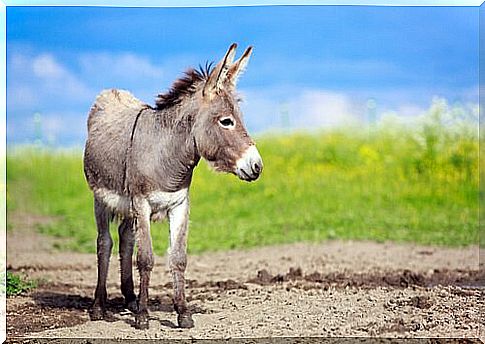
It is assumed that there are no more wild asses. Those specimens that are native to the wild are descendants of the houseleg that have been abandoned or abandoned and have got used to life without humans.
The rescue of the species
In Europe, especially in Spain, the number of donkeys has fallen sharply. They are even threatened with extinction! All four of Spain’s indigenous races are in danger. In addition, many victims are or are exposed to abuse when they are no longer needed after a typical pilgrimage with horses and donkeys (“Romería” in Spanish).
For this reason, special animal shelters have been set up for donkeys, where they can find shelter and a new home. Animal welfare organizations save and care for the animals that have been mistreated.
Donkeys are extraordinary animals, not only because they are robust and resistant, their intelligence is also amazing! Their strength and teaching was an important reason for their worldwide spread. They can therefore also be found in many proverbs, fables and fairy tales.





